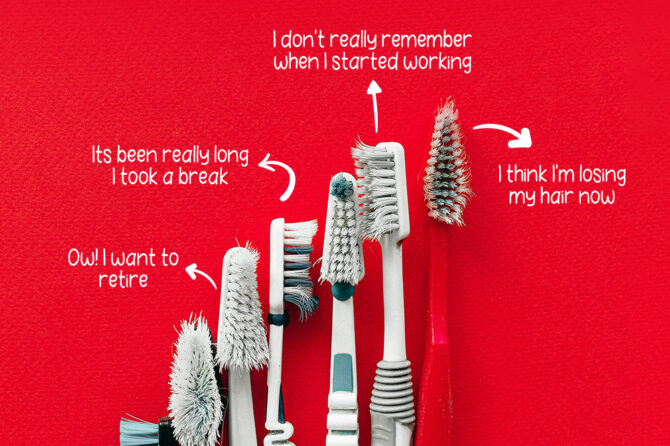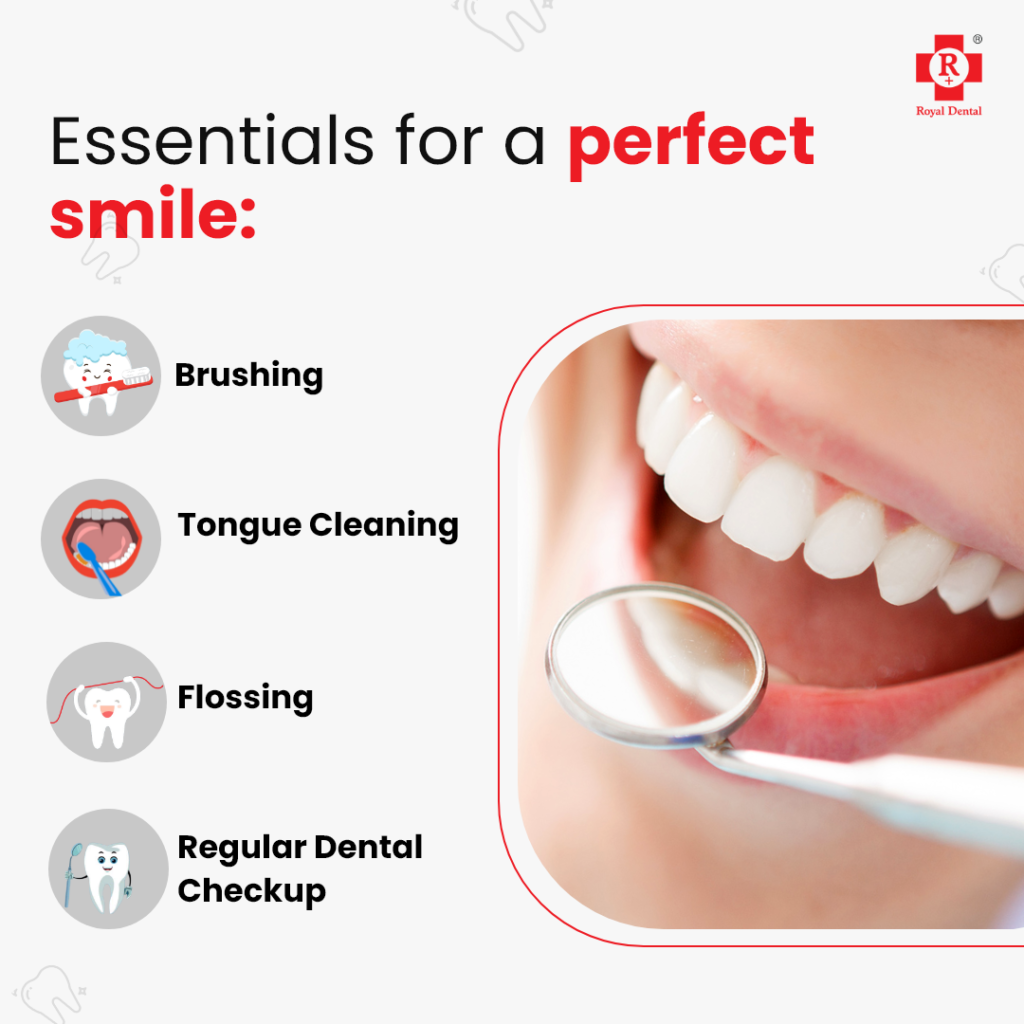
Right Brushing technique | Royal Dental Clinics
Maintaining oral hygiene is essential to keep gum diseases at bay. Proper tooth brushing helps to prevent and control the gum disease. It cleans the teeth below the gums where micro organisms, food debris, plaque tend to gather. Brushing should be performed twice a day irrespective of age; tooth brush should be change every 3-4 months for efficient plaque control.
Brushing techniques in children
It should be started in children as soon as their milk tooth erupts (6 months) either with a soft cloth or soft toothbrush.
Fone’s/sulcular/scrub technique: The brush is moved in big circles on outer surface of the teeth and partly in the gums. Initially big circles are made and then reduced to smaller circles. Brush the inner surfaces by tilting the brush vertically and making several up and down strokes. The chewing surfaces are cleaned by making back and forth strokes.
Brushing techniques for adults/geriatric
Modified bass technique: It is most widely used and recommended technique for adults.
1. Place the brush at 45 degree angle towards the gum, on outer surface of teeth and partly on the gums.
2. Bristles are vibrated by moving the brush back and forth and in circular motion
3. The bristles are then sweeped away over the surfaces of the teeth towards the occlusal/Incisal surfaces. This is very important step as the food particles that get lodged in the gums are effectively removed by the sweeping motion.
4. The inside surface of the posterior teeth are cleaned in the same manner. The inside surface of front teeth are cleaned by using up and down strokes.
5. Chewing surfaces are cleaned by moving the brush in back and forth motion .
Medium bristle toothbrush is indicated for this technique.
Modified Stillman
Use in cases where Recession/root exposure exists due to abrasion, erosion. Or there are Spongy gums where massaging is important.
- Brush is placed at 45 degree angle towards the gums. Bristles are placed partly on the gums and partly on the cervical portion of the teeth.
- The sides of the bristles are placed firmly rather than the ends. Care is taken not to penetrate the gingival sulcus.brush is moved with short back and forth circular motion towards the occlusal surface.
- Soft bristle toothbrush is indicated.
Charter’s technique
Patients who have undergone periodontal surgery Or Patients with FPD, orthodontic appliances.
- Bristles are placed at 45 degrees angle to the long axis of the teeth in an opposite direction as compared to modified bass and modified Stillman .i.e the bristles are directed coronally.
- After adaptation the bristles point away from the gingival margin but towards the interproximal surfaces of the teeth.
- After placing the bristles at gingival margin circular strokes are made.
- Chewing surfaces are cleaned by shirt back and forth strokes.
- Soft/medium bristle toothbrush is indicated for this technique.



Leave a reply